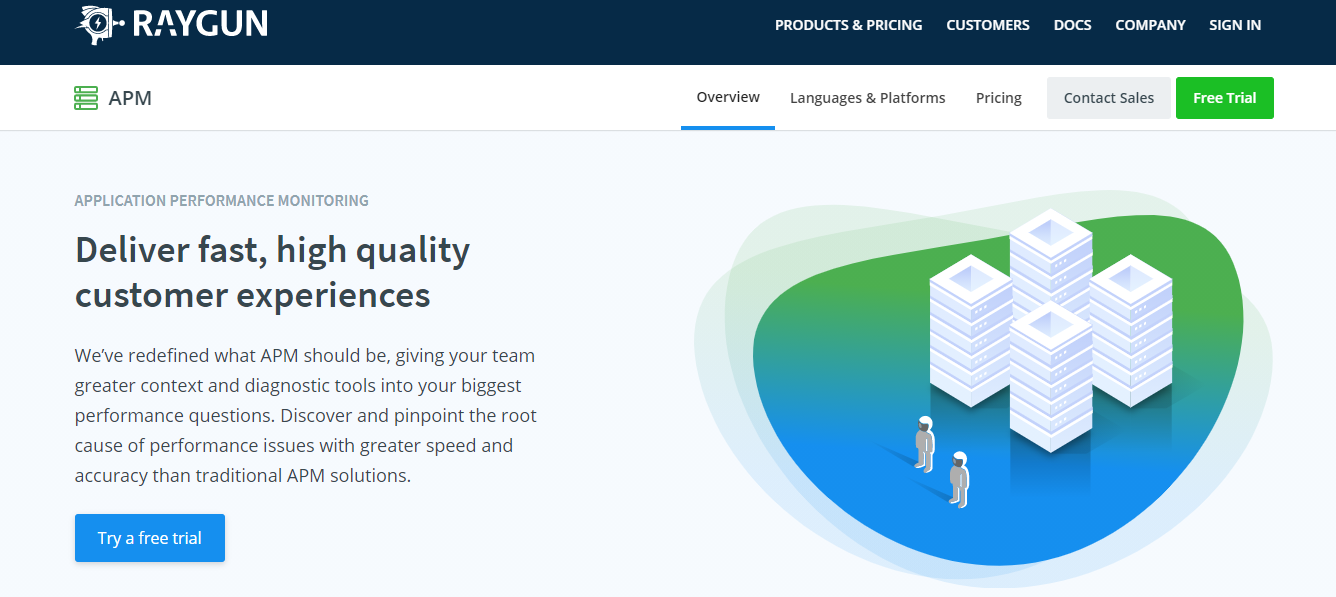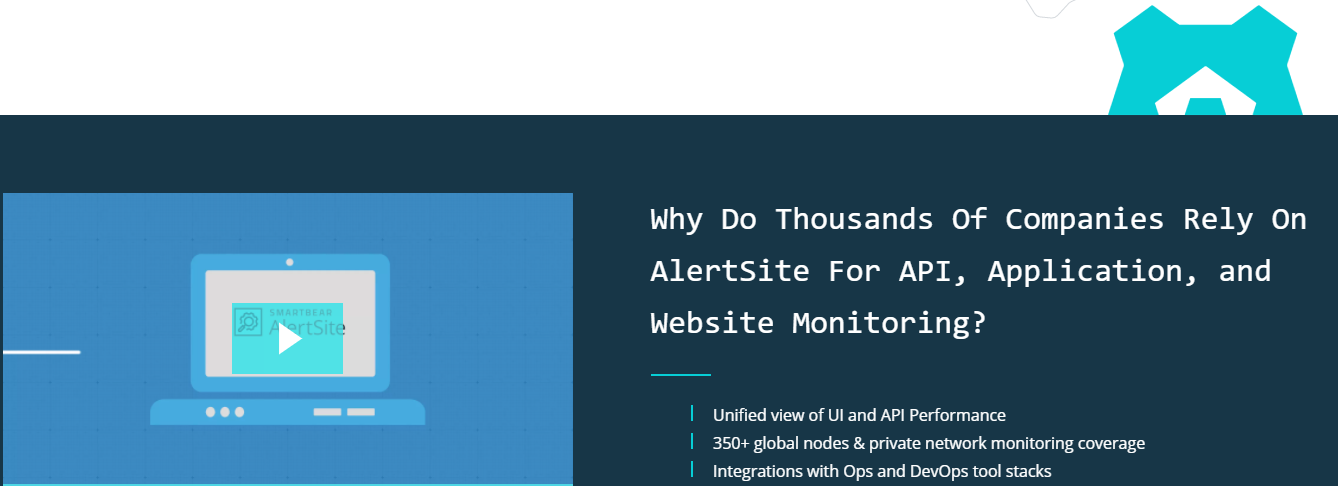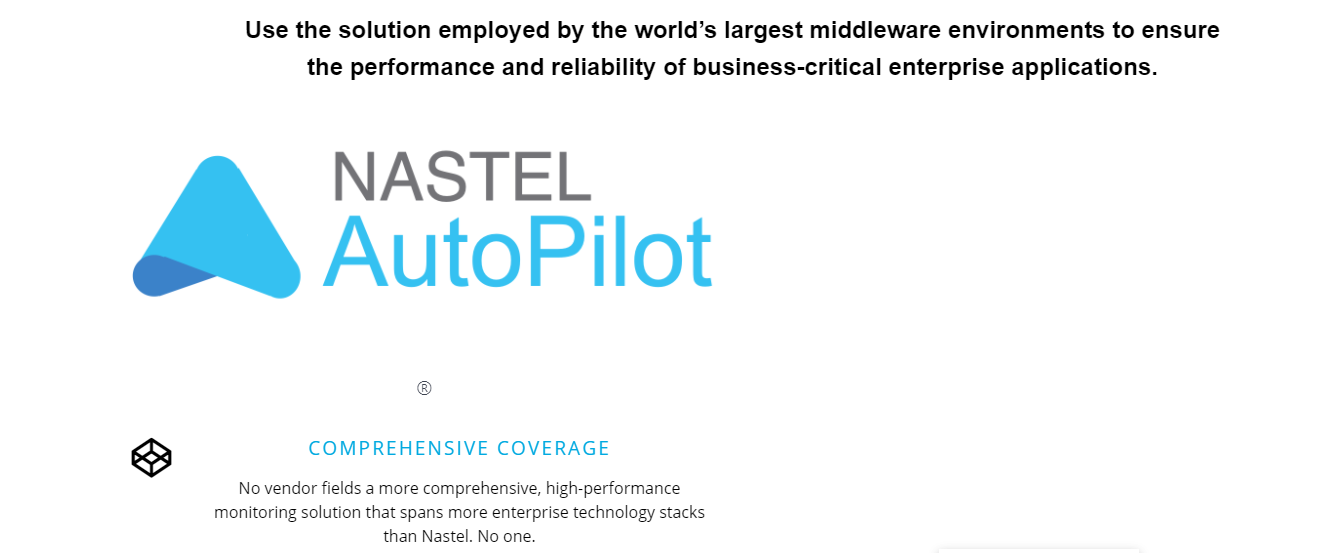The top 13 APM tools in 2020
From increased uptime and improved user experiences to reduced risks and decreased expenses, application performance monitoring provides organizations with several business benefits that enable them to move faster than their competitors and deliver more value to their users.
For this reason, it comes as no surprise that the market for application performance monitoring (APM) tools is expected to reach nearly $5 billion in 2020, an impressive uptick from the $2.72 billion the market hauled in during 2014.
With so many APM tools on the market, choosing the right solution can be tricky. Every organization is different, so APM software that works wonders for one company might not meet another’s needs. But by doing your due diligence and finding the APM tools that are the right fit, you can increase your organization’s effectiveness while ensuring the applications and services you deliver exceed customer expectations.
With that in mind, let’s take a look at 13 APM tools that are worth checking out.
1. Raygun

Application Performance Monitoring (APM) from Raygun offers a comprehensive solution that enables you to monitor the performance of your applications from one central location. Crash Reporting, Real User Monitoring, and APM software work together to provide real-time data about the user experience and performance, which you can easily leverage to identify bottlenecks. Simply put, this means you can figure out what needs to be done to speed things up. Use Raygun APM to determine whether a bug in your code, function, database or API call is causing a problem and take immediate steps to remedy it.
Raygun APM is different from other solutions as it gives technical teams greater context and diagnostic tools into their biggest performance questions. The flamechart shows every trace, and the issue creation engine allows developers to fix what’s impacting customers the most. Pricing is also much friendlier than some other tools on the market as it is charged per trace.
Raygun APM is available for .NET, .NET Core, and Ruby on Rails with Node.js support coming soon and other languages on the product roadmap. Similarly, while Raygun APM integrates with PagerDuty, Jira, and GitHub integrations with GitLab and Bitbucket also available soon.
2. Scout

Scout is an APM solution that provides insight into the performance of applications built on Ruby on Rails, Elixir, Python, PHP, and Node.js. Scout also offers an integration with Slack and Github to better support your workflow. While Scout APM makes it easy to identify slow database queries, N+1 database queries, and memory bloat you will need another tool to monitor your infrastructure. Many leading APM tools offer similar functionality on their own.
3. AppDynamics

Cisco’s AppDynamics is a powerful APM solution that helps organizations ensure their apps are working efficiently. The platform supports a number of languages, including Java, .NET, PHP, Node.js, C++, Python, and Go.
While this solution is powerful and can help you improve the user experience, it can take a while to implement fully. Employees may also need to be trained to figure out how to use it effectively. What’s more, because the platform was designed for the enterprise, it may be priced out of reach for many smaller, independent developers.
4. Stackify Retrace

Stackify’s Retrace is an APM tool that helps developers detect bugs during development and QA. It also monitors deployments to make sure apps are performing as designed.
The solution delivers a lot of value and supports PHP, Ruby, Node.js, Python, Java and .NET applications. So if you’re working with other languages, you’ll have to look for another APM solution.
5. Dynatrace

Dynatrace provides real-time insight into your entire application stack and enables you to optimize the user experience. The APM solution illustrates application topology and changes in real-time, leveraging artificial intelligence to detect performance problems and reducing MTTR (Mean Time to Recovery).
Despite the upsides, Dynatrace’s pricing model can make it a very expensive solution for anyone but enterprise customers.
6. Loupe

Loupe is a lightweight APM tool that can be hosted in your own data center or delivered via the cloud as a SaaS solution. The platform can be integrated with several tools in your tech stack and captures telemetry to provide you with the most relevant information needed to fix problems quickly.
As you begin your search for an APM solution, keep in mind that Loupe only supports .NET and Java applications. Depending on your budget, you may find that Loupe is a bit pricey for your needs too. But the app does offer a free trial so you can get an estimate of what your needs are before committing to a plan.
7. AlertSite

SmartBear’s AlertSite is a complete APM solution that enables developers to stay on top of the health of their applications—without worrying about drowning in false alerts. The platform provides actionable alerts in real-time so teams can take immediate action to fix small problems before they balloon into big ones. AlertSite is known for its intuitive interface that balances usability with functionality.
If you don’t find Alertsite works for you out of the box the platform integrates with tools like AppDynamics, PagerDuty, Slack.
8. AutoPilot

Nastel’s AutoPilot is a real-time, end-to-end application performance monitoring solution that works for applications built on Java and .NET across distributed system platforms, middleware, mainframes, and mobile apps. Teams that use AutoPilot are able to spend less time proactively monitoring their applications thanks to a real-time alerting system that informs employees of situations that require action.
While the platform provides several benefits, companies may need to spend a good deal of time training their users. You’ll probably need to invest several hours in properly configuring the tool before your team can become fully productive with it.
9. Instrumental

Instrumental is a full-stack APM solution that supports Docker, .NET, Java, Ruby, Python, MySQL, PostgreSQL, MongoDB, PHP, Node.js, and more. New metrics can be tracked by adding a new line of code. The low-cost tool offers a free trial that enables you to monitor up to 500 metrics for three-hour periods; advanced monitoring capabilities require a subscription.
While Instrumental provides a wealth of actionable insights, you do lose some granularity as you assess longer periods of history.
10. New Relic APM

New Relic APM provides a complete view of your tech stack and application health. The solution supports several languages, including NET, Java, Ruby, Python, Node.js, Go, and PHP. New Relic APM boasts flexible pricing and a free tier if you’re looking to try out the functionality.
While you do get a lot of features with New Relic APM they often don’t provide enough information to diagnose and resolve performance issues. A lot of the metrics and visualisations only scratch the surface so may be useful for business users rather than technical teams.
11. Datadog

Datadog enables you to monitor, troubleshoot, and optimize application performance of cloud-based applications all the way down to a single line of code or unique customer request. The platform provides a wealth of data in built-in dashboards that are visually appealing, including a flame chart for trace views.
For unique requests it can be difficult for the average user to create customized dashboards from scratch. New user onboarding may take a while for those who aren’t as advanced as some of their peers.
12. AppSignal

AppSignal is a APM solution that provides error tracking, host monitoring, and metrics for applications with support for Elixir, Ruby, Node.js, and JavaScript. All plans have a 30 day free trial and come with unlimited hosts, teams, integrations and apps so you can get an estimate of your monthly usage before making a committment.
While packed with features to improve server-side performance and monitoring infrastructure Appsignal lacks a real user monitoring tool. If you are looking to track how deployments and code changes impact your end-users you will need an additional tool.
13. Skylight

Skylight is an APM tool built with the Ruby community in mind. Skylight sorts endpoints by their “agony” metric — a combination of popularity and response time, to show where the biggest performance gains can be made.
While Skylight boasts beautiful vizualisations, deployment tracking, and usage based pricing the tool only supports Ruby applications. If you require support for other languages you will have to look elsewhere.
Which APM tool will work best for you?
As you can see, there’s no shortage of APM tools on the market. While many of these tools are similar, it’s worth analyzing their differences and conducting an APM tool comparison to determine which solution makes the most sense for your specific situation.
If you’re looking to deliver more value to your customers and build stronger applications, you need to add an APM solution to your tool stack.
Raygun APM is currently available for Ruby, .NET, .NET Core, Azure App Service and Ruby. With all the diagnostic information you need to solve your biggest performance questions, you can be up and running quickly. Sign up for a free 14-day trial here.

